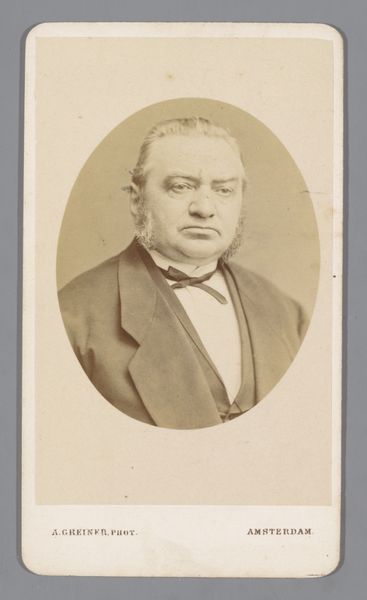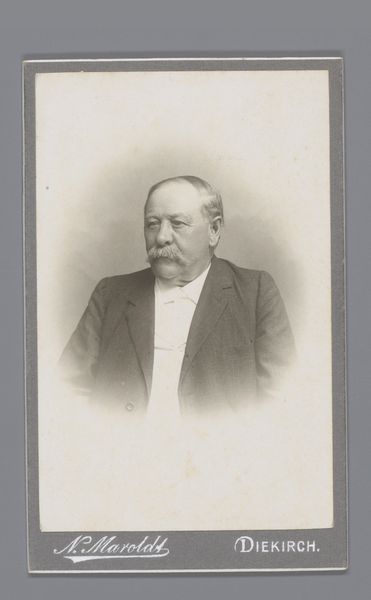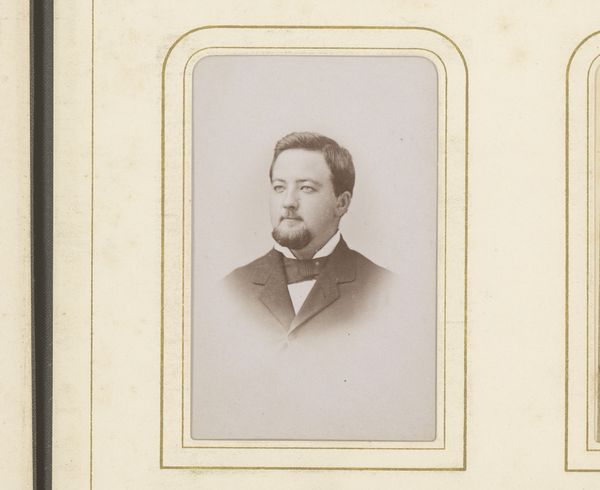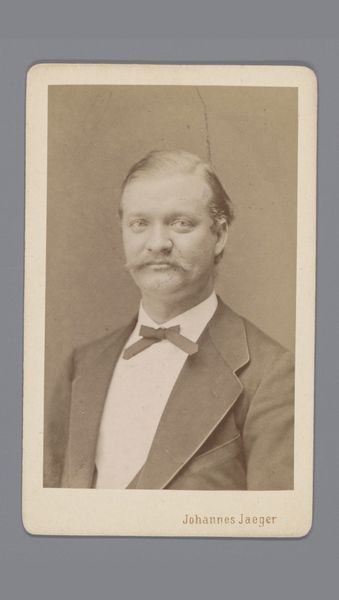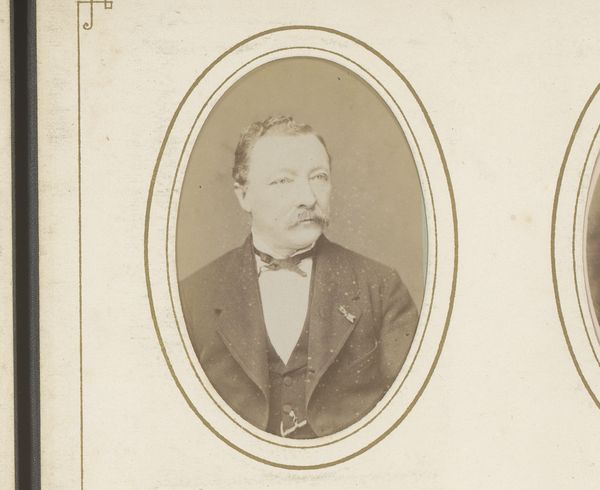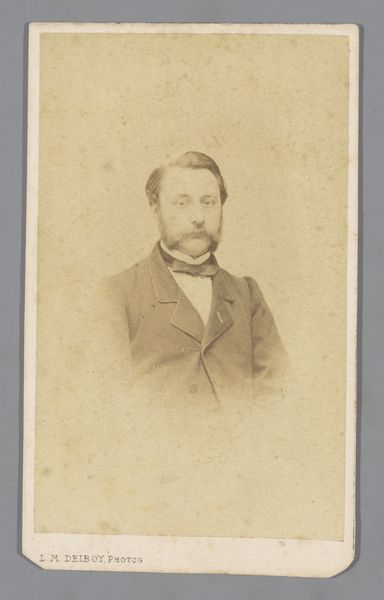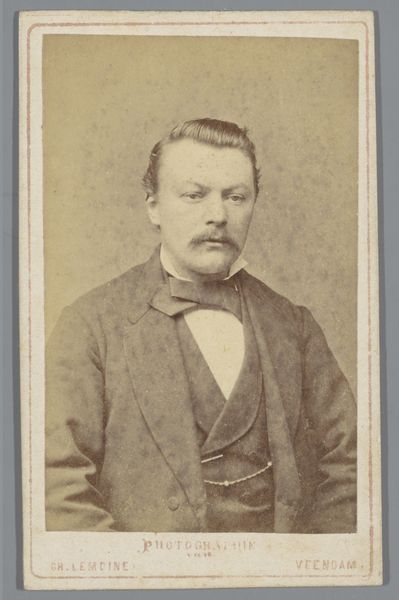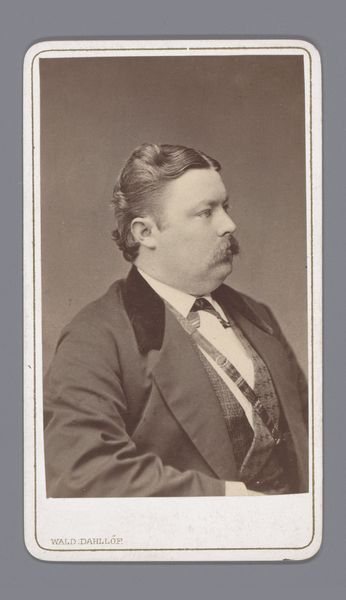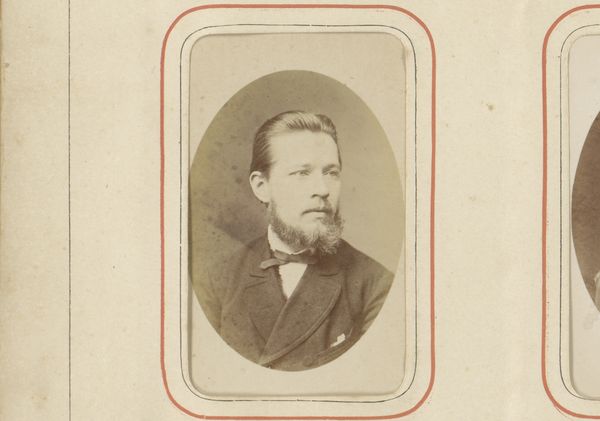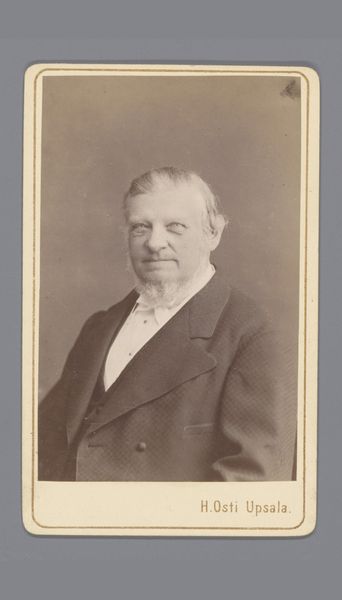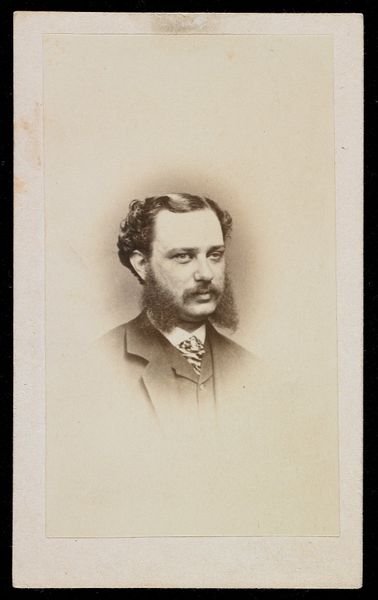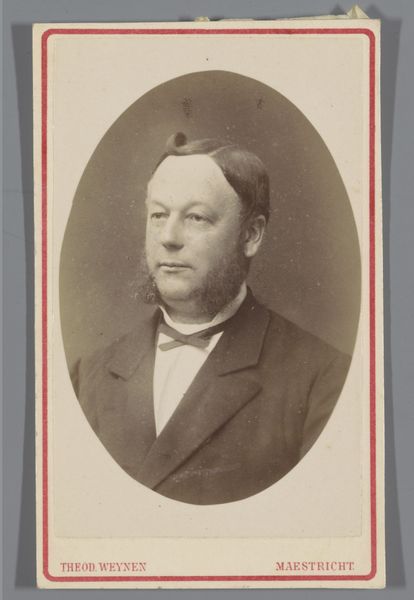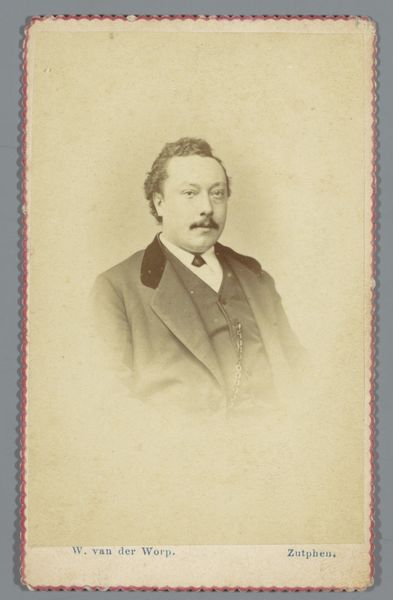
Dimensions: height 105 mm, width 63 mm
Copyright: Rijks Museum: Open Domain
Wilhelm Nestler created this carte-de-visite portrait of an unknown man sometime in the late 19th century. These small photographs became wildly popular during this time, serving as calling cards or mementos exchanged among friends and family. Nestler, working in Germany, was part of a booming industry fueled by technological advancements and a growing middle class eager to participate in modern social rituals. The man in the portrait, likely a member of this rising bourgeoisie, presents himself in a formal suit, projecting an image of respectability and success. What's fascinating here is the democratization of portraiture. Before photography, painted portraits were exclusive to the elite. Now, ordinary people could immortalize their image, shaping their own narratives within the rapidly changing social landscape. To fully understand this image, we might delve into the history of photography studios, analyze etiquette manuals of the time, and explore the economic forces driving the rise of the middle class in Germany. Ultimately, this seemingly simple portrait offers a glimpse into the social and cultural values of a transformative era.
Comments
No comments
Be the first to comment and join the conversation on the ultimate creative platform.
